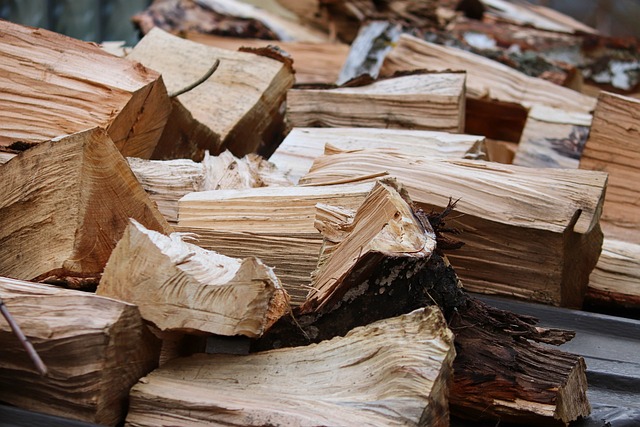Hi there! Welcome to the intriguing topic of selling firewood from your property. I’m excited to dive into this subject with you and provide you with a comprehensive guide that covers all the important details. So, if you’ve ever wondered about the possibility of turning your surplus firewood into a profitable venture, you’ve come to the right place! So, can you sell firewood from your property?
Yes, you can sell firewood from your property. However, it’s important to research and comply with local laws and regulations, obtain necessary permits/licenses, and practice sustainable sourcing. Make sure to understand zoning restrictions and environmental considerations before starting your firewood-selling business.
Selling firewood has gained significant popularity in recent years, thanks to the growing interest in sustainable and cost-effective heating solutions. Whether you have a large plot of land with plenty of trees or just a few acres, there’s potential for you to tap into this market.
In this article, I’ll be sharing useful information, tips, and guidelines in a friendly and conversational tone, to help you understand the ins and outs of selling firewood from your property.
Let’s get to it!
Understanding the Legalities and Regulations
When it comes to selling firewood from your property, it’s crucial to be aware of the local laws and regulations that govern such activities. Zoning regulations and permits can vary from one area to another, so it’s essential to do your homework before embarking on this venture.
To start, check with your local authorities or municipal offices to understand the specific rules and requirements in your area. They will be able to provide guidance on the permits, licenses, and any other legal considerations you need to address.
Permits and Licenses:
Depending on your location, you may need to obtain certain permits or licenses to sell firewood. These requirements are often in place to ensure consumer safety, fair business practices, and environmental protection.
Look into the business licenses that may be required for selling firewood in your area. These licenses will typically involve a registration process and possibly some fees. Be sure to gather all the necessary documentation and meet any specific criteria outlined by your local authorities.
Environmental Considerations:
When selling firewood, it’s vital to be mindful of the environment and practice responsible forestry. Some areas have restrictions on cutting down certain tree species or harvesting firewood from protected lands. It’s important to familiarize yourself with these regulations to avoid any legal issues and promote sustainability.
Consider sustainable harvesting practices, such as selectively cutting trees and replanting where possible. By adopting eco-friendly methods, you can ensure the long-term health of your land and contribute to the conservation of forests.
Remember, regulations and requirements can vary significantly, so it’s crucial to do your own research and consult with local authorities to fully understand the legalities and regulations pertaining to selling firewood from your property. Taking the time to comply with these guidelines will help you run your business smoothly and responsibly.
In the next section, I’ll explore how to evaluate your firewood sources and ensure you’re offering high-quality products to your customers.
Evaluating Firewood Sources
When it comes to selling firewood, quality is key. Customers expect firewood that burns well, produces ample heat, and lasts a decent amount of time. Therefore, it’s essential to assess the quality of the firewood you plan to sell. Here are a few factors to consider:
- Moisture Content: Dry firewood burns more efficiently, produces less smoke, and generates more heat. Aim for a moisture content of around 20% or lower. You can use a moisture meter to check the moisture levels in your firewood.
- Wood Species: Different wood species have varying properties and burn characteristics. Hardwoods like oak, maple, and birch are popular choices for firewood due to their high energy content and long-lasting burn. Softwoods like pine and fir burn faster but may be suitable for starting fires.
- Age and Seasoning: Firewood needs time to dry and season properly. Freshly cut wood contains high moisture content and won’t burn efficiently. Ensure your firewood has been seasoned for at least six months to a year for optimal quality.
Sustainable Firewood Sourcing:
To maintain a sustainable firewood business, it’s crucial to source your firewood responsibly. Here are a few tips for sustainable firewood sourcing:
- Harvest from Renewable Sources: Ensure that the trees you cut for firewood come from sustainable and renewable sources. Avoid cutting down trees from protected areas or endangered species.
- Tree Health and Maintenance: Prioritize trees that are damaged, dead, or pose a risk to the surrounding area. Regularly assess the health of your trees and invest in proper tree care to maintain a healthy and sustainable woodlot.
- Replanting and Reforestation: Consider replanting trees to offset the ones you harvest. This practice helps maintain the ecological balance and ensures a continuous supply of firewood in the long run.
Firewood Cutting and Processing
To successfully cut and process firewood, you’ll need the right tools and equipment. Here are some essential items you should consider:
- Chainsaw: A reliable chainsaw is a must-have tool for cutting logs into manageable sizes. Choose a chainsaw with an appropriate size and power for the type of wood you’ll be working with.
- Safety Gear: Safety should always be a top priority. Invest in protective gear such as gloves, safety goggles, hearing protection, and sturdy work boots. Don’t forget a helmet with a face shield for added protection.
- Axes and Mauls: Axes and mauls are useful for splitting larger logs into firewood-sized pieces. Choose tools that suit your physical strength and cutting requirements.
- Log Splitter: If you have a large volume of firewood to process, a log splitter can save you time and effort. Electric, gas-powered, or hydraulic log splitters can significantly ease the splitting process.
Techniques for Cutting Firewood:
Now that you have the right tools, it’s time to learn the techniques for cutting firewood effectively. Follow these steps for safe and efficient firewood cutting:
- Safety First: Before you begin, ensure you’re wearing the necessary safety gear and have a clear and safe working area.
- Tree Felling: If you’ll be cutting down trees yourself, familiarize yourself with proper tree-felling techniques. Ensure you have the necessary skills and experience, or consider hiring a professional for tree removal.
- Limbing and Bucking: Once the tree is down, remove the branches (limbing) and cut the tree into manageable lengths (bucking). Take care to make clean and straight cuts.
- Splitting: Use axes, mauls, or a log splitter to split the larger logs into firewood-sized pieces. Remember to use proper splitting techniques and be cautious to avoid accidents.
- Stacking and Drying: Stack the cut firewood in a well-ventilated area, off the ground, and protected from rain. Properly stacked firewood allows for airflow, promoting further drying and seasoning.
In the next section, I’ll discuss marketing and selling strategies to help you reach your target customers and maximize your business’s potential.
Marketing and Selling Firewood
Before diving into marketing and selling your firewood, it’s essential to identify your target market. Understanding your potential customers will help you tailor your marketing efforts and meet their specific needs. Consider the following:
- Homeowners: Many homeowners rely on firewood as a cost-effective and eco-friendly heating solution. They may have fireplaces, wood-burning stoves, or fire pits in their homes or outdoor spaces.
- Campers and Outdoor Enthusiasts: Campers, RV owners, and individuals who enjoy outdoor activities often require firewood for their camping trips or backyard bonfires.
- Restaurants and Businesses: Restaurants with wood-fired ovens, hotels with fireplaces, and other businesses may also be potential customers seeking a reliable firewood supplier.
Setting the Right Price:
Determining the right price for your firewood is crucial to attract customers while ensuring your business remains profitable. Consider the following factors when setting your pricing:
- Production Costs: Calculate the costs involved in harvesting, processing, and storing firewood. Include expenses for equipment maintenance, permits, and any other overhead costs.
- Market Demand: Research local market prices and competition to get an idea of the prevailing rates in your area. Adjust your pricing strategy accordingly to remain competitive.
- Value Proposition: Highlight any unique selling points or qualities of your firewood that justify a higher price. For example, if you provide sustainably sourced, well-seasoned, or specially treated firewood, it may justify a premium price.
Marketing Strategies:
To successfully market and sell your firewood, consider the following strategies:
- Branding and Business Name: Create an appealing brand identity and business name that resonates with your target market. Choose something memorable, descriptive, and aligned with your values.
- Online Presence: Establish an online presence through a website or social media platforms. Share engaging content, firewood-related tips, and promotions to attract potential customers.
- Local Advertising: Advertise in local newspapers, community bulletin boards, or radio stations. Consider distributing flyers or placing ads in local directories. Word-of-mouth marketing is also powerful, so encourage satisfied customers to spread the word.
- Partnerships: Build relationships with local businesses, such as campgrounds, restaurants, or hotels, that may benefit from your firewood supply. Explore potential partnerships or collaborations to expand your customer base.
Remember, exceptional customer service plays a vital role in attracting and retaining customers. Provide excellent service, be responsive to inquiries, and address any concerns promptly.
Customer Service and Delivery
Providing exceptional customer service is key to building a loyal customer base and establishing a positive reputation. Here are some tips to enhance your customer service:
- Prompt Communication: Respond to customer inquiries and requests in a timely manner. Be available through phone, email, or social media to address any questions or concerns promptly.
- Knowledge and Expertise: Be knowledgeable about different wood types, burning characteristics, and firewood storage tips. Offer helpful advice and recommendations to customers to ensure they have the best experience with your firewood.
- Flexibility and Customization: Be willing to accommodate special requests whenever possible. Some customers may have specific needs, such as wood sizes or delivery timing. Showing flexibility can set you apart from competitors.
- Value-Added Services: Consider offering additional services that enhance the customer experience. This could include stacking firewood at the customer’s location or providing firewood storage solutions.
Ensuring Efficient Delivery:
Efficient and reliable delivery is crucial to customer satisfaction. Here are some considerations for smooth delivery operations:
- Delivery Options: Determine if you’ll offer delivery services and define your delivery area. Decide whether you’ll charge extra for delivery or include it in the firewood pricing.
- Logistics and Timing: Optimize your delivery routes to minimize travel time and fuel costs. Communicate clear delivery schedules to customers, ensuring they know when to expect their firewood.
- Packaging and Presentation: Ensure that your firewood is neatly packaged and protected during delivery. This showcases professionalism and attention to detail.
- Delivery Safety: Train your delivery personnel to handle firewood safely and follow proper lifting techniques. This minimizes the risk of injuries and ensures a safe delivery process.
Conclusion
In conclusion, selling firewood from your property can be a rewarding venture. By understanding the legalities, sourcing quality firewood, mastering cutting and processing techniques, and implementing effective marketing and customer service strategies, you’re well-equipped to start your business.
Remember to prioritize sustainability, provide exceptional service, and deliver firewood efficiently. With dedication and passion, your firewood business has the potential to thrive.
Best of luck on your entrepreneurial journey!









